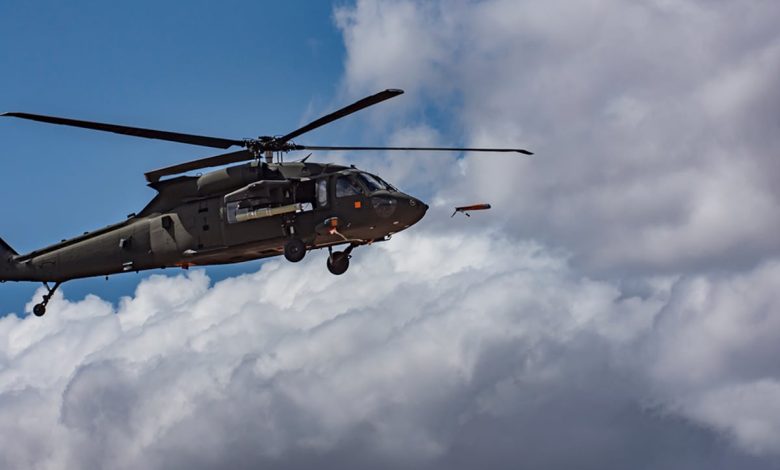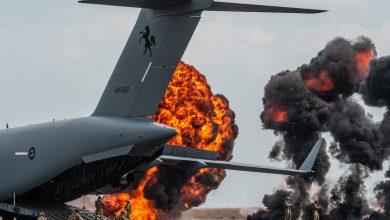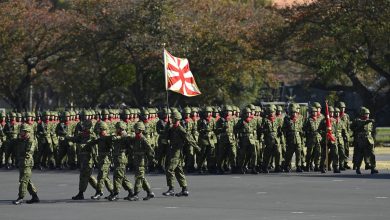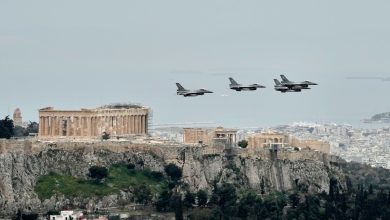Army speeds up development of multipurpose ‘launched effects’

With funds freed up from the U.S. Army’s aviation rebalance earlier this year, the service will move more quickly on Long-Range Launched Effects development and procurement, according to the Army’s program executive officer for aviation.
Launched Effects, or LE, is the service’s term of art for an envisioned unmanned segment among its aerial platforms, capable of delivering a wide range of capabilities such as targeting, reconnaissance, surveillance, network extension or kinetic strike. Launched Effects can be deployed from both air and ground vehicles.
The effort represents a new direction in the Army’s aviation portfolio, which prioritizes drones and the more loosely defined category of LE platforms as the tip of the spear in enemy contact.
“We were able to accelerate the long-range efforts by about a year,” Brig. Gen. David Phillips told Defense News in an interview before the Association of the U.S. Army’s annual conference.
This means the Army will likely put out a request for proposals for what is considered more of a Corps-level asset in the third quarter of fiscal 2026. The service was originally looking at focusing on small and medium launched effects first and had yet to secure funding for the long-range version.
At the same time, the Army is making sure it is collaborating with the joint force to ensure it is not duplicating efforts.
“We have been paying close attention to the maturity of longer-range capability,” Phillips said.
The Army also continues to mature its medium-range capability which is in a prototyping effort well underway using Anduril Industries’ Altius 700 aircraft. Collins Aerospace, a Raytheon Technologies company, is the mission system provider, and Aurora Flight Sciences is the system integrator. Technology Service Corp. and Northrop Grumman Information Systems are providing modular payloads.
“We completed some additional flight testing off of an MH-60 Black Hawk helicopter at Dugway Proving Ground, Utah, last month and we’re looking at a way to deliver that capability faster,” Phillips said.
The medium-range LE will also be developed in conjunction with Program Executive Office Missiles & Space to fill its requirement for a helicopter-fired Long-Range Precision Munition.
The service was debating whether it made sense to pursue a separate LRPM program through PEO M&S or if the capability essentially could be classified as an LE and was therefore a redundant effort.
The Army’s ruling is that “it is a Launched Effects Medium Range. It’s captured in that requirement and that’s [how] we’re going to go about the acquisition process,” Lt. Gen. Karl Gingrich, who overseas the programs and resources division of the Army staff at the Pentagon, told Defense News.
As part of the requirement, the Army is looking at ways to accelerate the lethal version of the medium-range LE to meet the service’s need for an air-launched precision munition.
“We’re being more efficient and effective that way,” Phillips said.
The Army has already issued a request for white papers for a short-range LE.
“We’re squarely in the evaluation space,” Phillips said.
The service plans to launch an effort late this year or early next year that will lead to a user demonstration aimed at getting feedback from the force.
The method is similar to what the service has done with other small, unmanned aircraft systems efforts. “That may sound familiar, that model, but it’s working for us in the small UAS space,” Phillips said.
Jen Judson is an award-winning journalist covering land warfare for Defense News. She has also worked for Politico and Inside Defense. She holds a Master of Science degree in journalism from Boston University and a Bachelor of Arts degree from Kenyon College.







